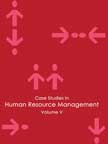Reorganizing HP
|
|
ICMR HOME | Case Studies Collection
Case Details:
Case Code : HROB009
Case Length : 10 Pages
Period : 1990 - 2001
Organization : HP
Pub Date : 2001
Teaching Note : Available
Countries : USA
Industry : Computers and Technology
To download Reorganizing HP case study
(Case Code: HROB009) click on the button below, and select the case from the list of available cases:

Price:
For delivery in electronic format: Rs. 300;
For delivery through courier (within India): Rs. 300 + Shipping & Handling Charges extra
» Human Resource and Organization Behavior Case Studies
» HRM Short Case Studies
» View Detailed Pricing Info
» How To Order This Case
» Business Case Studies
» Area Specific Case Studies
» Industry Wise Case Studies
» Company Wise Case Studies

Please note:
This case study was compiled from published sources, and is intended to be used as a basis for class discussion. It is not intended to illustrate either effective or ineffective handling of a management situation. Nor is it a primary information source.
Chat with us

Please leave your feedback

|
|




<< Previous
Excerpts
Background Note
|
Stanford engineers Bill Hewlett and David Packard founded HP in California in
1938 as an electronic instruments company.
Its first product was a
resistance-capacity audio oscillator, an electronic instrument used to test
sound equipment. During the 1940s, HP's products rapidly gained acceptance among
engineers and scientists. HP's growth was aided by heavy purchases made by the
US government during the Second World War. Till the 1950s, HP had a well-defined
line of related products, designed and manufactured at one location and sold
through an established network of sales representative firms.
|

The company had a highly
centralized organizational structure with vice-presidents for marketing,
manufacturing, R&D, and finance. HP had 90 engineers in product
development. To have a clear demarcation of goals and responsibilities, and
to promote individual responsibility and achievement, HP began to organize
these engineers into smaller, more efficient groups by forming four product
development groups...
|
|
The Fiorina Reorganization
Fiorina immediately introduced several changes, in an attempt to set
things right at HP. She began by demanding regular updates on key
units. She also injected the much-needed discipline into HP's
computer sales force, which had reportedly developed a habit of
lowering sales targets at the end of each quarter. Sales
compensation was tied to performance and the bonus period was
changed from once a year to every six months.
HP Labs, the company's R&D center had only been making incremental
improvements to existing products... |
HP in Trouble
Apart from these structural problems, Fiorina's tenure reportedly did little to
improve HP's business performance. The market share gains made in Fiorina's
first year as CEO had begun to recede in late 2000. While HP continued to
dominate the inkjet and laser printer business with a 41% market share, its PC
share had fallen from 7.8% to 6.9% for the 12 months ended January 31, 2001...
|
|









